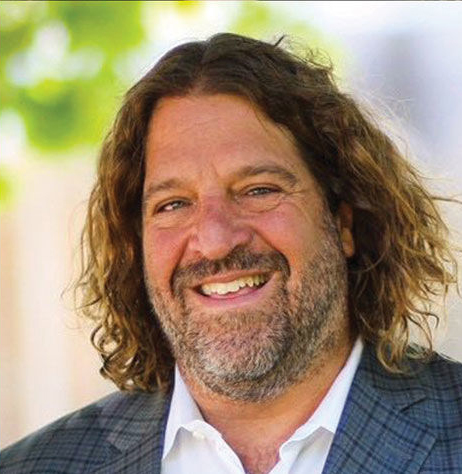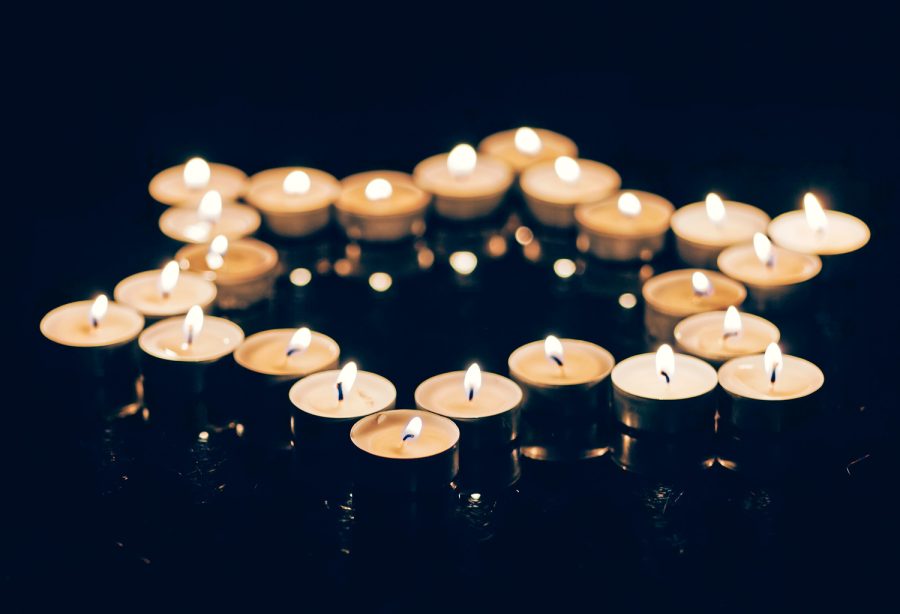Shaky on shiva etiquette? Keep the mourners first in mind
Published August 17, 2022
As a child, everything I knew about shiva came from “The Facts of Life” (“TFOL” for those in the know). In case your recall for 1980s television shows is not as ridiculous as mine, I will set the scene: Natalie Green’s father has unexpectedly passed away, and the rest of the girls ponder how to help. After a commercial break, they are in the shiva home. Mrs. Garrett has assumed the role of balabusta, directing people where to put noodle puddings and hard-boiled eggs.
Pragmatic Jo Polniaczek explains why there are no flowers, while vain Blair Warner is aghast that all the mirrors have been covered. As Natalie and family are in small chairs in the distance, innocent and kind Tootie Ramsey frets about what to say because she’s used all of her “good material” at the funeral. All of the characters, including the mourners, are uncomfortable.
When I later learned about actual shiva traditions, it turned out that “TFOL” got it right. Still, you may be dubious about getting religious education from a 40-year-old television show. So for the ultimate word in shiva customs, visit chabad.org or the aptly named shiva.com, where you can learn and even send a platter.
Unfortunately, “TFOL” formal religious training and all the information on the internet still haven’t made it easier to navigate the process as an adult. Despite having all the facts like Jo and all the domestic skills of Mrs. Garrett, I’m a nervous wreck like Tootie. I am even more confused by the variations in Judaic shiva practices.
I rarely see covered mirrors or small chairs in my circles. Was Jo wrong after all?
Then there are the sheer logistics. Do I knock on the door? Do I bring or send food? On a recent occasion, I was told to “bring a dish” (the thought of all those mismatched platters shocks my inner Mrs. Garrett).
Most often, I offer to contribute financially to the shiva by sending money to the “shiva coordinator,” often a dear friend of the family who volunteers to order all the food and coordinate everything that is necessary. That varies wildly as well. In one case, I was limited to giving $20 but, in another, I was assessed an even share of the total bill.
Sometimes it’s as easy as clicking on Venmo, while others ask for a check (really hard for anyone under the age of 50).
I am often barely able to offer my condolences to the family in a packed room, but when I recently found myself in a lengthy conversation with the widow, I grappled to find the right words. In my personal worst shiva mishap, I did not attend the shiva and caused lasting hurt in a friendship.
In an effort to get it right from now on, I talked to the smartest people I know: rabbis, rebbetzins, the recently bereaved, people from varied observance levels and ladies who seem to be really good at making coffee. I initially wanted brass-tacks practical advice on whether I am supposed to fix myself a plate of food or show up for the shiva service (I’ll admit I like to skip this part).

Through the process of corresponding with these individuals and a particularly enlightening lunch with my friend and rabbi, Randy Fleisher of Central Reform Congregation, I gained a deeper understanding than I could have imagined.
To explain the diversity in practice I have witnessed, Fleisher reminded me that while we have traditions and customs, there is no rulebook for feelings. Families are choosing what resonates with them when it feels like their whole world is falling apart. Fleisher advises families he is counseling not to view each custom as an obligation, but that certainly does not mean he’s dismissive of the traditions.
In fact, Fleisher’s face lights up as he reminds me that Judaism provides an incredible framework for how to respond to death, dying and mourning. He goes on to recount a personal story of a shiva that was so meaningful that it, in part, encouraged him to become a rabbi. At the exact moment that there seems to be no logic in the universe for mourners, our Jewish traditions provide structure to keep them in a holy bubble, surrounded with supporters.
Each and every stage of the shiva process is designed to serve the mourners. Rabbi Karen Kriger Bogard, also of CRC, herself a recent mourner, wrote:
“The traditional Jewish mourning practices line up eerily with the Five Stages of Grief by (Elizabeth) Kubler-Ross. From shiva to the first 30 days to the first year, it seems to really understand and tap into the support bereaved persons, families and households are experiencing.”

As to the progression to the next phase, Fleisher says that it is traditional to walk around the block at the conclusion of the shiva, a physical act of separating from the shiva home and re-entering the world. As mourners encounter people who don’t know they’ve had a loss, it signifies the next step in the process of moving forward.
All of this information was wonderful and affirmed my belief in our beautiful ancient traditions, but it didn’t exactly answer my lingering brass-tacks questions. When I use my best lawyer skills to try to redirect, Fleisher reminds me (in different words) that the question has been asked and answered. When you keep in mind that the whole process is designed for the mourners, it answers a lot of the questions. Stick to comfort, respond with love and let that be your guide.
Should I walk in? Yes, it is one less burden for the mourners getting the door.
Should I eat? After you offer a plate to the mourners, and only if there is some left over, you might eat so that they are not drowning in food.
Use this principle to guide more important matters as well. What should I say? Focus on the person who died, stay on point. Kriger Bogard suggests saying, “I am so sorry for your loss. (Name of the decedent) was such a special person, and I know they will be missed.”
Should I attend the shiva service and kaddish? Not surprisingly, this one is a resounding yes from the rabbis and two rebbetzins I asked. It alleviates the mourners’ burden of worrying about gathering a minyan, and it is the essential task of shiva to remember the person who passed away.
Karen Wetmore, who recently found herself in the unfortunate position of organizing shiva for two dear friends in a single week, added to this practical advice. She advises organizers to talk to the family about what they need and want from numbers to kashrut preferences. Again, it is all about them, and that lets you start making a list of the things you will need to serve them.
Wetmore advises bringing plastic containers in which to store leftovers at the shiva house. Make sure you have help with the cleanup and storage. She adds that everyone is mourning a loss of someone special in their lives, even the worker bees, so divide up responsibilities so no one person is doing everything.
My friend Renee offered this advice: “When you are in charge of collecting money and people call afterward, everyone should be able to contribute even if they join after the tray has been sent. We make a donation (to the family’s charity of choice) after all expenses have been paid.”
For those who are not the organizer, but are considering contributing anyway, Renee advises, “If you are thinking, should I go in on the tray? Am I close enough friends? Then the answer is yes.”
The same goes for your attendance. If you think you should “maybe” go to the shiva, you should just go. You do not have to go more than once unless you are so essential that they will need to see you often.
You do not contribute or bring anything but comfort and a possible hug. Even though it is about the mourners, they would certainly never expect you to be financially burdened by supporting them. If you do want to contribute but are unsure of the financial commitment, it is OK to tell organizers how much you would like to contribute and ask if it is best to give to their group effort or go it alone.
My friend Rachel says gift cards to restaurants were helpful in the difficult weeks that followed the shiva after her father passed away, while my friend Betsy said that it was particularly meaningful when a friend just showed up with a meal that could go in the freezer if she didn’t need it. Kriger Bogard adds that her mother’s friends picked up her kids and took them to the park, which was particularly helpful as she mourned her grandmother. Another form of comfort may be offering to spend a day with the mourners later as they go through things or clean out the house.
At the end of the day, here is the simple fact of life that “TFOL” left out. We will all eventually be the decedent, the mourners and those trying to offer support. Our religion recognizes this and has designed a beautiful process to assist in the healing. We can all do our part by helping form that holy bubble that Fleisher mentioned.
Each set of mourners may require something slightly different. There are no universal right answers (except maybe the Venmo thing, about which I am certain). When you keep the mourners in mind, you will certainly do the right thing.
Suzanne Epstein-Lang is a lawyer, social worker, wife and mom endlessly striving to eat healthier, get organized and celebrate life’s moments. She and her family belong to Central Reform Congregation.



















